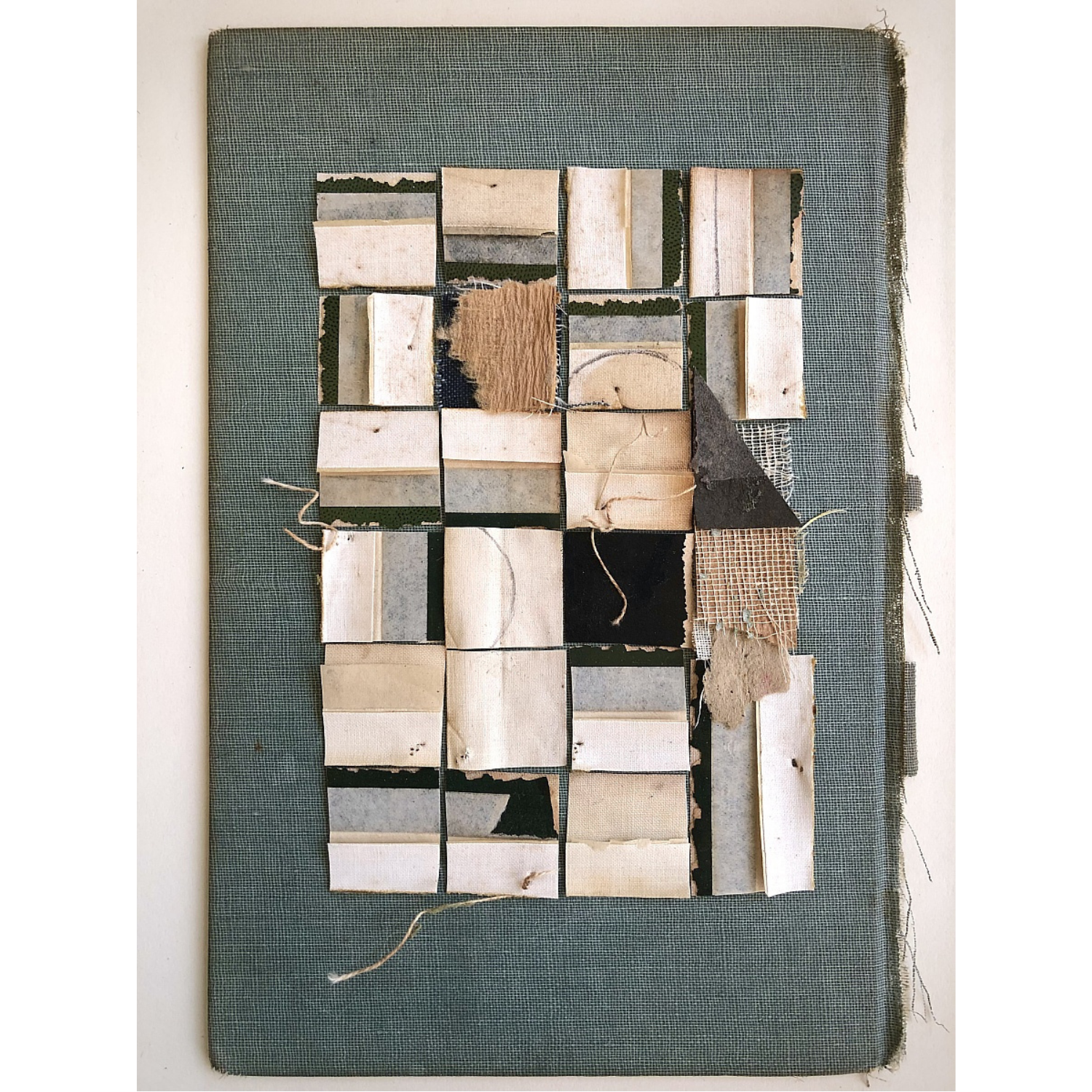
This Is How Things Fall Into Place
PINKY IBARRA URMAZA
April 6 - April 28, 2022
Observing society's chaotic navigation into what seems to be the post-pandemic era, Urmaza attempts to reconstruct a new sense of normalcy by re-arranging materials found in her studio.
ABOUT THE ARTIST
Pinky Ibarra Urmaza’s (b. 1976) work primarily involves collages. She selects found objects and fragments that are imbued with history, manipulates them through stitching, burning and other forms of mark making, and then thoughtfully collages them, giving them new contexts and inspiring viewers to imagine their own narratives. Urmaza completed her BFA in Communication Arts at DLSU. She studied at the International Center of Photography in NY and the Art Students League in NY. She has exhibited in Hong Kong, Paris, New York and Manila. Urmaza currently lives and works in New York.

“When the world breaks down, how should it be put back together?” This is the question that Pinky Ibarra Urmaza ruminates on as she observes society’s chaotic navigation into a post-pandemic era. The contradictions and inconsistencies on how to proceed challenge our mindsets and orientations. Guidance from health departments can be confusing: with the lifting of mandates, we are left to gauge our own risk tolerances. There are no clear and straight paths towards a better future; any progress is often disrupted by more crises, including the recent Omicron surge and the Russia-Ukraine war.
Urmaza’s series for the exhibit is an attempt to reconstruct her new sense of normalcy amidst these complex current events, by rearranging materials found in her studio. These are mostly discards from making artworks for previous shows, assembled into collages that reflect a reordering of reality that the world continues to struggle with. She uses book fragments to experiment with form, hue and geometry until they make visual sense, echoing her constant daily adjustments to the ever-shifting socio-political landscapes. Each collage is thus a visual diary that records her restless search for coherence and poetry from among the abandoned scraps. Her works compel viewers to investigate more closely. The details reveal the history of the materials, but the new configurations evoke curiosity, and the wonder that comes with seeing possibilities.
Certain collages are assembled in grids and patterns, in a pursuit of order, or the illusion of it, over things that cannot be fully controlled. Urmaza obsesses over pandemic data tracking and studies, and desires for a predictability in the forecasts. Her titles, such as “Surge” and Abatement” and “Islands and Borders”, refer to terms frequently used in news reports. A few collages resemble maps, as if creating a sense of place and perspective. While she tries to make all the pieces fit through persistent examination and recalibration, the final work always turns out differently from her original idea. She ultimately realized the gift of serendipity, “that I should always leave room for the unknown, the inexplicable and the abstract, with the hope that I end up with something that merges accident and intention.”
Text by Stephanie Frondoso
Selected works from This Is How Things Fall Into Place
Pinky Ibarra Urmaza, Drift, 2022, Old book parts, paper, acrylic, ink and graphite, 11 3/4 x 15 3/4 in (30 x 40 cm)
Pinky Ibarra Urmaza, Broken Horizons I, 2022, Old book parts, thread and graphite, 8 1/2 x 5 1/2 in
(21.5 x 14 cm)
Pinky Ibarra Urmaza, Sky Matrix, 2022, Old book covers, 8 1/4 x 5 1/4 in, 21 x 13.5 cm
Pinky Ibarra Urmaza, Ghost Map, 2022, Old book parts, paper, cardboard and graphite, 7 7/8 x 7 7/8 in (20 x 20 cm)
Pinky Ibarra Urmaza, The Shape of Uncertainty I, 2022, Old book covers and ink, 9 1/4 x 6 1/4 in (23.5 x 16 cm)
Pinky Ibarra Urmaza, The Shape of Uncertainty II, 2022, Old book covers and acryli, 7 5/8 x 5 3/4 in (19.5 x 14.5 cm)
Pinky Ibarra Urmaza, Crossword, 2022, Old book covers, oil pastel, 7 7/8 x 5 1/2 in (20 x 14 cm)
Pinky Ibarra Urmaza, Ode to Schwitters, 2022, Old book covers, paper, string, acrylic and graphite, 16 1/2 x 12 3/4 in (42 x 32.5 cm)














